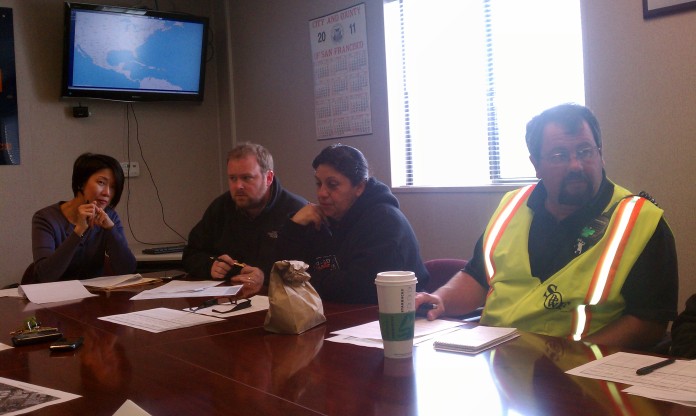Fire Department App – PSA from Fire Department on Vimeo.
Imagine, you’re in the middle of a weekly team meeting when your iPhone vibrates. You stand up and calmly tell your coworkers, “There’s been a heart attack in the first floor gym. I’m CPR trained. I’ll be back as soon as I can.”
Similar scenarios may soon by playing out all over the country thanks to groundbreaking use of the location-aware features of modern smartphones and access to emergency dispatch information from local fire departments. In the San Francisco East Bay, it could be happening in a matter of days, as the San Ramon Valley Fire Protection District rolls out its new ‘Fire Department’ app for iPhone, which launches publicly today.
I felt the world change
A couple weeks back, I found myself in Chief Richard Price’s office with my friend Joe Hackman, eyes glistening with tears as we watched a PSA video for the application (read Joe’s thoughts on what the new app means to our SF East Bay community). In the video, a 72-year-old man collapses at the lumber store; across the parking lot, a young man in an electronics store gets an alert “CPR needed” – his phone gives him an address and map of where to go, and shares the location of the nearest automated external defibrillator. Sitting in that office, seeing an app that puts real life-saving information at the fingertips of any willing and trained volunteer, I felt the world change.
The creators of this application have moved beyond the real‐time Web to the right time Web. – Tim O’Reilly, O’Reilly Media
Chief Price and his staff first conceived of this application more than a year ago, after an incident in which they were having lunch and learned on their radios that a man was having a heart attack just steps away. Heart attack-induced brain death begins in just minutes, and fire department staff simply cannot arrive fast enough to save most people – but any army of CPR-trained volunteers can. And while they have had to be in exactly the right place to respond, the new app will dramatically extend the ability of everyday citizens to save lives.
Price told me that he has just 43 firefighters on duty during the day, but in his suburban district of 170,000 people, 10 percent have CPR training. “You can see the significance,” he said. Area residents will see the app PSA in local movie theaters beginning this weekend.
Price and his staff developed the iPhone application in partnership with the Center for Applied Informatics at Northern Kentucky University. Over the coming weeks and months, he will work with the International Association of Fire Chiefs and developers at Workday to bring the free application to Android and other mobile platforms, and to spur widescale adoption.

“The value of this application is far too important to society to not ambitiously share it with other communities around the globe,” Price said.
In the San Ramon Valley alone, community members who download the new app could help respond to as many as 100 calls a year. Across the U.S., nearly 300,000 people die each year of cardiac arrest.
“I think in the big picture, what we recognize is that of the people who have sudden cardiac arrest, less than one in three get CPR,” said heart surgeon Junaid Khan, president of the American Heart Association’s East Bay board. “Without CPR, a person really has very little chance of survival. For the first time, a smart phone application can actually help save a life.”
‘You can get there faster’
Dr. Khan and Chief Price also talked about the added benefit of creating more responders. Historically, even CPR-trained individuals sometimes balk in the face of crisis, but now self-identified volunteers within 500 yards of a heart attack in a public place will receive push notifications, increasing the likelihood of two or more responders, who can encourage one another and even take turns administering CPR.
“I think this is really a perfect marriage of technology with a government service and volunteers who want to participate,” said Kahn. “Every minute lost dramatically decreases your chance of survival. Literally every minute counts.”
I asked Kahn about the medical savings associated with early response in terms of less long-term damage. He said more data is needed for such an epidemiological study. “If you get the patient to the hospital before significant damage, the chance that they would successfully recover obviously increases. This app would let you know. You can more likely get there faster than the fire department.”

To learn about CPR and AED training in your area, visit the AHA’s website.
For more information on the new application and an electronic press kit, visit the SRFPD’s website.
To download the SRVFPD’s app now, visit ‘Fire Department’ in the iTunes store.
Chief Price will be a guest on Gov 2.0 Radio on the evening of February 6, 2011, to discuss this new technology.
– Adriel Hampton








